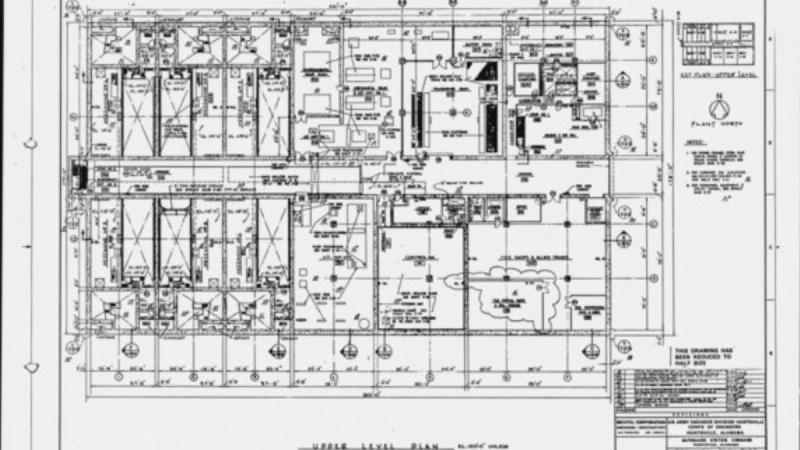MICKELSEN SAFEGUARD COMPLEX: NORTH DAKOTA'S COLD WAR RELIC

Do you know why the Cold War ended? Was it a change in policy from the U.S. along with Gorbachev's changes to the Soviet Union? What about the many revolutions taking place in the midst of economic pressures throughout Europe? Sure, it’s all of that but if you’re not including a pyramid in North Dakota, you don’t have the whole picture. Named after an Army Air General of the same name, the Stanley R. Mickelsen Safeguard Complex (SRMSC) is an interesting piece of history built in the middle of BFE.
Stanley R. Mickelsen Safeguard Complex: Cold War Missile Defense
You can still find the Stanley R. Mickelsen Safeguard Complex, but it’s probably out of your way.
Located closer to Canada than it is any American city, Nekoma, North Dakota, is home to the pyramid-shaped facility used by the military during the Cold War, albeit, not for very long.
The town it’s closest to has a population of 30 people on a good day and the structure itself is a strange one amid farmland and…a lot of nothing.
Still, among the plains, the Stanley R. Mickelsen Safeguard Complex stands tall as a giant concrete pyramid featuring four large circles on each face.

That Time the Army Built a North Dakota Pyramid
During the Cold War, there wasn’t a lot that was off the table—underground bases in the ice sheet of Greenland, cats surgically enhanced to spy on the Soviets, MKUltra—the list goes on and on.
With that being said, building a giant pyramid in North Dakota doesn’t sound all that crazy but it was still an ambitious project that wasn’t in use for very long.
The Mickelsen Safeguard Complex was built in the 1970s, with its completion coming in October 1975. Despite the $140 million price tag, which is closer to $800 million these days, the project was only live until April 1976.
Within the complex was part of the Safeguard Program, a $5.7 billion missile defense system that with inflation would be around $32 billion in modern value.
The purpose of the Safeguard Program was to protect Minuteman ICBMs. It was an anti-ballistic missile (ABM) system operated by the Army, protecting the U.S. Air Force's silos in the region from potential Soviet attacks.
When the U.S.S.R. got wind of the Mickelsen Safeguard Complex and what it could do, both the Soviets and Americans came together to limit such programs, creating a path to some sort of control in the arms race.
Many experts believe that the North Dakota pyramid helped create the foundation for the Anti-Ballistic Missile Treaty (ABM Treaty) as well as easing tensions between the two sides.
SRMSC and the Safeguard Program
Safeguard wasn’t just in North Dakota but it is the only state where the facility was fully realized. Although construction began on a related facility in Montana, it was never finished.
More than 1,000 construction workers were involved in building the SRMSC, which involved creating a structure capable of withstanding a nuclear blast nearby should one occur.
Since the Stanley R. Mickelsen Safeguard Complex was working to take down enemy ICBMs, there were radars capable of detecting the missiles hundreds of miles out.
If a threat was detected, there were people and computers inside the complex capable of launching various responses to destroy the nuke found throughout the Peace Garden State, consisting of 30 Spartan missiles and 16 Sprint missiles.
Despite the great efforts to construct the project along with the impact it would have, the Stanley R. Mickelsen Safeguard Complex would be decommissioned and stripped of valuable materials over the next decade, including support beams, staircases, and of course, military-related equipment.
Furthermore, in addition to the pyramid, another part of the Safeguard Program can still be found and actively in use within North Dakota at the Cavalier Space Force Station.

Current Ownership of Stanley R. Mickelsen Safeguard Complex
While the facility has changed hands multiple times, the current owners of the Mickelsen Safeguard Complex are the Spring Creek Hutterite Colony—a religious community of Anabaptists similar to the Mennonites and Amish.
There have been others who have purchased property, including local development officials in 2017, aiming to repurpose it as an industrial site, and the Cavalier County Job Development Authority (CCJDA) in 2020, who worked to attract businesses to the area.
Specifically, the CCJDA was looking to attract businesses like data centers and it seemed to have worked but that’s where things get weird.
Despite Bitzero Blockchain, Inc. inquiring about the site in July 2022, planning to invest $500 million to develop a secure data center and an interpretive historical center, however, this doesn’t seem to have come to fruition.
Progress on the site remains stagnant, with no significant developments or visible activity from Bitzero, and state officials confirmed that promised funding for the project has not been utilized, leaving the future of the site uncertain.
…then again some sources do show that Bitzero did in fact purchase the Nekoma Pyramid, so who really knows?
Either way, the Stanley R. Mickelsen Safeguard Complex is an interesting property that had widespread consequences helping to bring together the opposing sides of the Cold War, ultimately deterring nuclear war.
Suggested reads:
BY BUDDY BLOUIN
Buddy Blouin is a Contributing Writer at VeteranLife.com
Buddy Blouin is a Contributing Writer at VeteranLife.com



